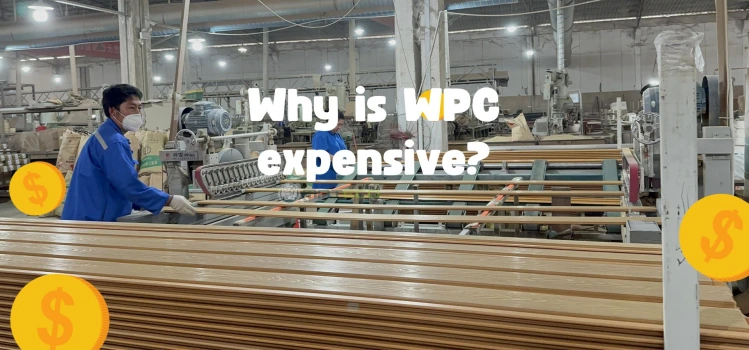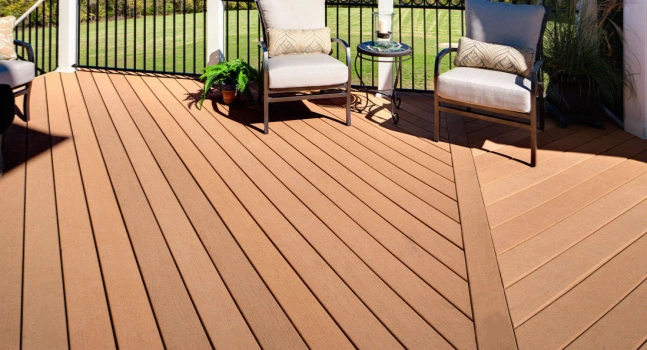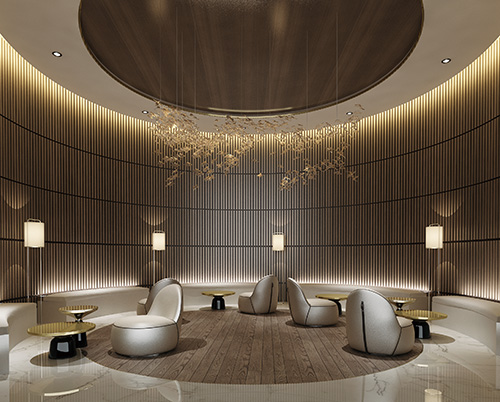Are WPC Wall Panels Waterproof? A Comprehensive Guide
Wall panels have become an essential component in modern construction and interior design, offering aesthetic appeal and functional benefits. Among the various types of wall panels available, Wood Plastic Composite (WPC) wall panels stand out for their unique properties. One of the most sought-after features of WPC wall panels is their waterproof nature. In this article, we'll explore why WPC wall panels are waterproof, where they are commonly used, and the benefits they offer.
Where Are Waterproof Wall Panels Generally Used?
Waterproof wall panels are versatile and find applications in a variety of settings, particularly where moisture resistance is crucial. Some common areas include:
Bathrooms and Wet Rooms: In spaces prone to high humidity and direct water contact, such as bathrooms, waterproof wall panels prevent water damage and mold growth.
Kitchens: Kitchens also benefit from waterproof panels, especially around sinks, countertops, and backsplashes where splashes and spills are frequent.
Basements: Basements are often susceptible to dampness and water seepage. Waterproof wall panels help protect these areas from moisture infiltration.
Laundry Rooms: With washing machines and dryers generating steam and occasional leaks, waterproof panels ensure the walls remain unaffected by moisture.
Commercial Spaces: Restaurants, gyms, spas, and other commercial establishments use waterproof wall panels to maintain hygiene and prevent water-related damage.
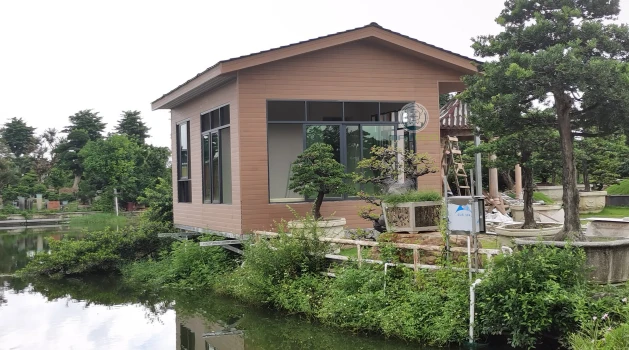
Benefits of Using Waterproof Wall Panels
Using waterproof wall panels offers several advantages that enhance both the functionality and aesthetics of a space:
Durability: Waterproof wall panels are highly durable and resistant to wear and tear, making them a long-lasting choice for high-moisture areas.
Mold and Mildew Resistance: These panels inhibit the growth of mold and mildew, ensuring a healthier indoor environment.
Low Maintenance: Waterproof panels are easy to clean and require minimal maintenance, saving time and effort in upkeep.
Aesthetic Appeal: Available in various designs, colors, and textures, waterproof wall panels can enhance the visual appeal of any space.
Energy Efficiency: Some waterproof panels offer additional insulation properties, contributing to energy efficiency by maintaining temperature control.
Types of Waterproof Wall Panels
Waterproof wall panels come in various types, each with unique characteristics suited to different applications. Here’s an overview of the most common types:
1. WPC Panels:
Composition: Made from a blend of wood fibers and thermoplastics, WPC panels combine the natural look of wood with the durability of plastic.
Applications: Ideal for bathrooms, kitchens, basements, and commercial spaces where water resistance is crucial.
Installation: Designed for easy installation with interlocking edges and can be attached using adhesives or mechanical fasteners.
Benefits: Highly durable, resistant to moisture, mold, and mildew, and available in a variety of colors and textures that mimic natural wood.
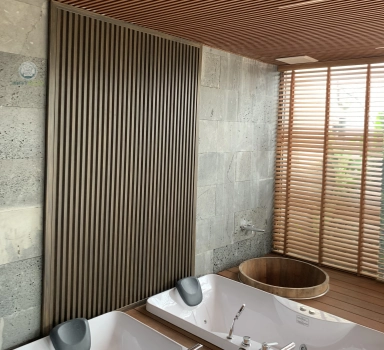
2. PVC Panels:
Composition: Made from durable plastic, resistant to moisture and mildew.
Applications: Commonly used in bathrooms, kitchens, and commercial spaces due to their affordability and water resistance.
Installation: Easy to install with adhesive or nails; lightweight and flexible.
Benefits: Cost-effective, easy to clean, and available in a wide range of designs.
3. Acrylic Panels:
Composition: High-gloss plastic panels that offer a sleek, modern look.
Applications: Ideal for kitchen backsplashes and shower walls, where aesthetic appeal and waterproofing are important.
Installation: Can be glued directly to the wall surface; available in large sheets to minimize seams.
Benefits: Highly aesthetic with a glossy finish, easy to clean, and resistant to water and stains.
4. Fiber Cement Panels:
Composition: Made from a mixture of cement, sand, and cellulose fibers, offering a durable and water-resistant surface.
Applications: Suitable for exterior applications and wet areas like bathrooms and laundry rooms.
Installation: Requires more skill to install, often using screws or nails and sealing joints to prevent water infiltration.
Benefits: Extremely durable, fire-resistant, and capable of withstanding harsh weather conditions.
5. Laminated Wall Panels:
Composition: Consist of a core material (MDF or plywood) laminated with a decorative waterproof layer.
Applications: Used in various residential and commercial settings for both aesthetic and functional purposes.
Installation: Can be attached with adhesive or fasteners; easy to cut and customize.
Benefits: Versatile in design, cost-effective, and provides a smooth, water-resistant surface.
Each type of waterproof wall panel offers distinct advantages, making it suitable for specific environments and applications. Understanding these options allows for better decision-making when selecting the right panel for your needs.
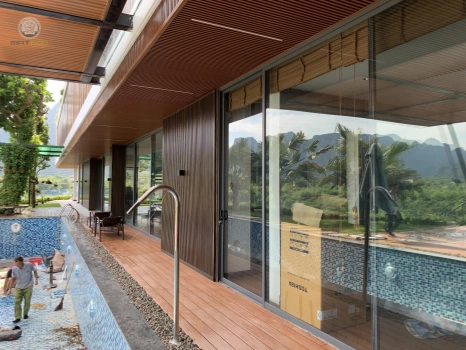
Why WPC Is Waterproof
Wood Plastic Composite (WPC) wall panels are renowned for their waterproof properties. This can be attributed to several factors:
Material Composition: WPC is made from a blend of wood fibers and thermoplastics. The plastic component in WPC provides inherent waterproof characteristics, preventing water absorption and damage.
Manufacturing Process: During the production of WPC panels, the materials are combined under high heat and pressure. This process ensures a tight bond between wood fibers and plastic, resulting in a dense, impermeable structure.
Surface Treatment: WPC panels often undergo additional surface treatments, such as laminating or coating, which enhance their resistance to water and moisture penetration.
Structural Integrity: The composition and design of WPC panels ensure they do not warp, swell, or crack when exposed to water, unlike traditional wood panels.
Seamless Installation: WPC panels are designed for seamless installation, with interlocking edges that prevent water from seeping through gaps. This ensures a continuous waterproof barrier.
Comparison with Other Waterproof Materials
Versus PVC Panels:
Material Differences: Compare WPC to PVC (Polyvinyl Chloride) panels, highlighting differences in composition, durability, and environmental impact.
Aesthetic Options: Discuss the visual and textural differences, with WPC often mimicking natural wood more closely.
Versus Tile:
Installation Complexity: Explain that WPC panels are generally easier and quicker to install than tiles, which require grouting.
Maintenance: Contrast the maintenance requirements, noting that tiles may need regular re-grouting and sealing, whereas WPC panels do not.
Conclusion
WPC wall panels are an excellent choice for areas where water resistance is essential. Their unique composition and manufacturing process make them inherently waterproof, offering numerous benefits such as durability, mold resistance, low maintenance, and aesthetic versatility. Whether for residential or commercial use, WPC wall panels provide a reliable and stylish solution to keep your spaces protected from moisture and water damage.
If you are looking for a WPC manufacturer, MATECO WPC will be your best choice.
Website: https://www.matecowpc.com
WhatsApp: +86-13380085620
Email: info@matecowpc.com




